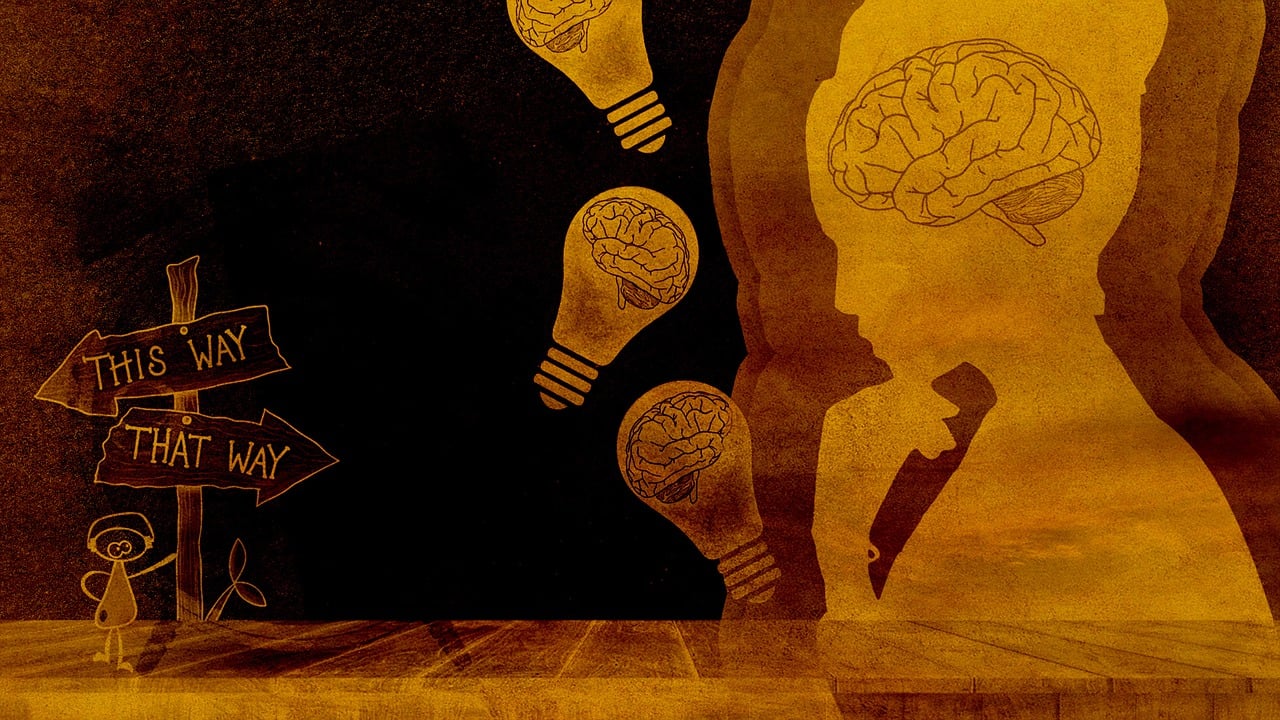In the world of decision making, there exists a classic tool that has withstood the test of time – the pros and cons list. This simple yet powerful technique has been utilized by countless individuals to make informed choices and weigh their options. By meticulously listing out the benefits and drawbacks of a particular course of action, you are able to gain clarity and perspective on the potential outcomes. Whether it’s deciding on a job offer, purchasing a new home, or even choosing what to have for dinner, the pros and cons list provides a structured approach to making sound decisions. So, if you’re seeking to enhance your decision-making skills and ensure alignment with your goals, it’s time to harness the power of pros and cons lists.

This image is property of images.unsplash.com.
Introduction to Pros and Cons Lists
Definition of Pros and Cons Lists
Pros and cons lists are a classic decision-making tool that helps individuals assess the advantages and disadvantages of a particular choice. These lists are structured in a way that allows you to objectively evaluate the positive and negative aspects of a decision, giving you a clearer picture of the potential outcomes.
A pros and cons list is typically divided into two columns, with the “pros” representing the positive factors and the “cons” representing the negative factors. By listing out all the relevant factors and weighing their importance, you can make more informed decisions.
Purpose and Benefits of Pros and Cons Lists
The main purpose of using pros and cons lists is to break down a decision into its component parts and analyze each factor separately. This systematic approach allows you to consider both sides of the argument and evaluate the potential consequences of your choices.
There are several benefits to using pros and cons lists. Firstly, they provide clarity and organization to your decision-making process. By structuring your thoughts and visualizing the information in a list format, you can see the pros and cons side by side, making it easier to compare and contrast.
Secondly, pros and cons lists encourage you to consider different factors and perspectives. By brainstorming and listing out all the relevant factors, you ensure that you don’t overlook any important aspects of the decision.
Thirdly, this method promotes logical and objective decision-making. By evaluating the pros and cons in a systematic way, you can reduce the influence of biases and emotions, leading to more rational decision-making.
Furthermore, using pros and cons lists can improve your focus. By organizing your thoughts and breaking down the decision into smaller parts, you can prioritize what matters the most and avoid getting overwhelmed by irrelevant information.
Lastly, pros and cons lists enhance critical thinking skills. By analyzing each factor and considering its weight and importance, you train your mind to think critically and evaluate the potential outcomes of your decisions.
How to Create an Effective Pros and Cons List
Identify the Decision
The first step in creating an effective pros and cons list is to clearly define the decision you need to make. Be specific and focus on a single decision rather than trying to address multiple choices at once. This will help keep your list organized and manageable.
Research and Gather Information
Once you have identified the decision, it’s important to gather as much information as possible. Conduct research, consult experts, and seek out reliable sources to ensure that you have a comprehensive understanding of the subject matter. The more information you have, the more informed your decision will be.
Divide into Pros and Cons
Next, divide a piece of paper or a digital document into two columns, with the “pros” on one side and the “cons” on the other. Start listing all the positive aspects or advantages of the decision in the “pros” column and all the negative aspects or disadvantages in the “cons” column. Be thorough and try to consider all possible factors.
Assign Weight and Importance
Once you have listed all the pros and cons, it’s time to assign weight and importance to each factor. Consider the significance of each item on the list and rank them accordingly. This will help you determine the overall impact of each factor on your decision.
Evaluate and Compare
Finally, evaluate and compare the pros and cons of your decision. Look for patterns or trends in the list and assess how each factor relates to one another. Consider the weight and importance you assigned to each factor and determine which side outweighs the other. This analysis will lead you to a more informed decision.

This image is property of images.unsplash.com.
When to Use Pros and Cons Lists
Complex Decision-Making
Pros and cons lists are particularly useful when facing complex decisions that involve multiple factors and potential outcomes. By breaking down the decision into smaller parts, you can analyze each factor separately and come to a more informed conclusion.
Choosing Between Alternatives
When you have multiple alternatives to choose from, creating a pros and cons list can help you compare and contrast the options. By listing out the pros and cons of each alternative, you can objectively evaluate their strengths and weaknesses, making it easier to select the best option.
Evaluating Risks and Rewards
If a decision involves certain risks or rewards, a pros and cons list can help you assess the potential gains and losses. By weighing the positive outcomes against the negative consequences, you can determine if the benefits outweigh the risks, or if the risks are too significant to outweigh the rewards.
Pros of Using Pros and Cons Lists
Clarity and Organization
Pros and cons lists provide clarity and organization to your decision-making process. By visually organizing the information into two columns, you can easily see the positive and negative aspects side by side, making it easier to understand the potential implications of your choices.
Consideration of Different Factors
Using a pros and cons list ensures that you consider a wide range of factors before making a decision. By brainstorming and listing out all relevant aspects, you can avoid overlooking important information and make a more well-rounded evaluation of your choices.
Logical and Objective Decision-Making
Pros and cons lists promote logical and objective decision-making. By evaluating each factor separately and considering its weight and importance, you can reduce the influence of biases and emotions. This leads to more rational and informed decisions.
Improved Focus
Creating a pros and cons list can help you improve your focus on the key factors that matter in a decision. By breaking down the decision into smaller parts and prioritizing the most important factors, you can avoid getting overwhelmed by irrelevant information and focus on what truly matters.
Enhanced Critical Thinking
Using a pros and cons list enhances your critical thinking skills. By analyzing each factor and considering its potential impact on the decision, you train your mind to think critically and evaluate the potential outcomes. This skill is applicable not only in decision-making but in various aspects of life.

This image is property of images.unsplash.com.
Cons of Using Pros and Cons Lists
Overemphasis on Rationality
One potential downside of using pros and cons lists is that they can place an overemphasis on rationality. While rational thinking is important in decision-making, it’s crucial to also consider emotions, intuition, and gut feelings. Pros and cons lists may not capture these subjective aspects of decision-making.
Potential for Biases
Despite their aim to promote objective decision-making, pros and cons lists are still susceptible to biases. Our own beliefs, preferences, and past experiences can influence the way we perceive and assess the pros and cons. It’s important to be aware of these biases and strive for objectivity.
Limited in Capturing Emotions and Intuition
Pros and cons lists are limited in their ability to capture and consider emotions and intuition. Some decisions may involve subjective aspects that cannot be easily quantified or evaluated using a pros and cons list. It’s important to recognize the limitations of this tool and consider other factors beyond the rational analysis.
Tips for Making the Most of Pros and Cons Lists
Be Honest and Comprehensive
When creating a pros and cons list, it’s important to be honest with yourself and consider all the relevant factors. Avoid downplaying or exaggerating certain aspects to favor a specific outcome. The more comprehensive and truthful your list is, the more accurate your decision-making process will be.
Prioritize and Analyze Individual Factors
After listing out all the pros and cons, prioritize and analyze each factor individually. Consider the weight and importance of each item and assess how it relates to the overall decision. This will help you determine which factors carry more significance and influence your decision the most.
Consider Short-term and Long-term Effects
When evaluating the pros and cons, consider both the short-term and long-term effects of your decision. Some factors may have immediate benefits or drawbacks, while others may have long-term consequences. Take into account how the decision will impact your future and weigh the pros and cons accordingly.
Seek External Opinions
Don’t hesitate to seek external opinions when creating your pros and cons list. Sometimes, others’ perspectives can provide valuable insights and uncover aspects that you may have overlooked. Engage in discussions and consider different viewpoints to make a more informed decision.
Revisit and Update the List
Pros and cons lists are not set in stone. As new information arises or circumstances change, it’s important to revisit and update your list. Regularly review the factors and analyze their relevance in light of any new developments. This will ensure that your decision remains relevant and informed.
Alternative Decision-Making Tools
Decision Matrix
A decision matrix is a tool that helps you evaluate and prioritize multiple criteria when making a decision. It involves creating a matrix with decision criteria on one axis and alternative options on the other axis. By assigning weights and scores to each criterion, you can rank the alternatives and make a more informed choice.
SWOT Analysis
SWOT analysis stands for strengths, weaknesses, opportunities, and threats. It is a framework that helps you assess the internal and external factors that may influence a decision. By identifying and analyzing these factors, you can better understand the potential risks and benefits of a choice.
Cost-Benefit Analysis
Cost-benefit analysis is a tool used to assess the financial implications of a decision. It involves comparing the costs associated with a decision against the benefits it will provide. By quantifying and evaluating the costs and benefits, you can determine if the decision is financially viable.
Mind Mapping
Mind mapping is a visual tool that helps you brainstorm and organize your thoughts. It involves creating a diagram with a central idea or decision in the middle and branching out to related factors and considerations. Mind maps can help you visualize the connections between different elements and generate new ideas.
Real-Life Examples of Pros and Cons Lists
Choosing a College or University
When deciding which college or university to attend, creating a pros and cons list can be extremely helpful. Pros may include factors such as the quality of education, reputation, extracurricular opportunities, and location. Cons may include factors such as cost, distance from home, and the academic program’s requirements. By listing out these factors and weighing their importance, you can make a more informed decision.
Buying a House
When purchasing a house, a pros and cons list can assist in evaluating different options. Pros may include factors such as location, size, condition, and potential for appreciation. Cons may include factors such as cost, maintenance, and commute time. By considering each factor separately and comparing the pros and cons, you can make a well-rounded decision.
Career Decision Making
When making career decisions, a pros and cons list can help assess different job opportunities. Pros may include factors such as salary, growth opportunities, work-life balance, and job satisfaction. Cons may include factors such as stress levels, long working hours, and commute distance. By weighing these factors and considering their impact on your overall goals and aspirations, you can make a more informed career decision.
Starting a Business
When contemplating starting a business, a pros and cons list can aid in evaluating the feasibility and potential challenges. Pros may include factors such as independence, potential for financial success, and creative freedom. Cons may include factors such as financial risk, competition, and long working hours. By listing out and analyzing these factors, you can assess the viability of your business idea.
Conclusion
Pros and cons lists are a powerful decision-making tool that can help you make more informed choices. By breaking down complex decisions into smaller parts and systematically evaluating the advantages and disadvantages, you can navigate through the decision-making process with greater clarity and objectivity.
While pros and cons lists have their limitations, such as overemphasizing rationality and potentially neglecting emotions and intuition, they provide a structured and organized approach to decision-making. By following the tips provided and considering alternative decision-making tools, you can enhance your decision-making abilities and make choices that align with your goals and values.
Remember, the power of pros and cons lists lies in your ability to be honest, comprehensive, and open to different perspectives. Embrace this tool as a means to unleash your potential and make choices that lead to greater happiness and harmony in your life.


